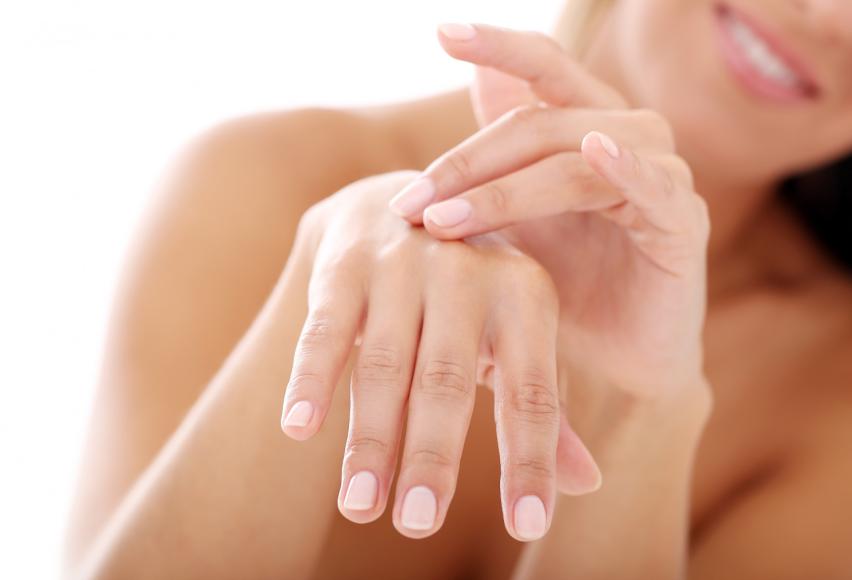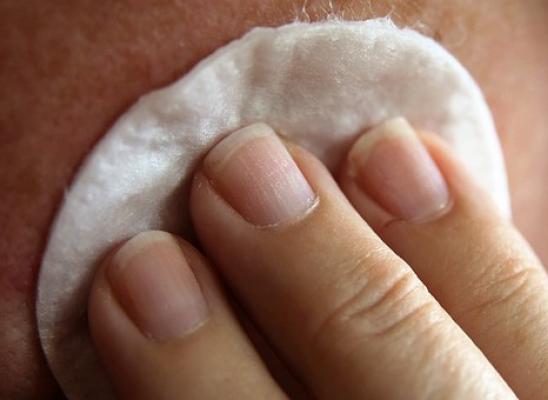Progressive Muscle Relaxation and Soft Touch Training for Skin Picking: New Insights to Know About

Online test
Find out the severity of your symptoms with this free online test
Don’t touch!
Stop picking!
Do something else!
If you live with skin picking, you’ve probably heard this advice at some point. After all, the goal of treating skin picking is to not pick, right? And finding other things to do besides touching the skin is often part of changing behavior. Many of the most often used treatments involve some form of habit reversal (not touching) or managing emotional distress and anxiety. Just don’t touch. But is that the best advice?
Touch is something that is hard-wired into our existence. The experience of touch releases powerful brain chemicals such as oxytocin (the “love hormone”) and helps to reduce levels of cortisol (the “stress hormone”.) Touch is associated with a whole host of physical and psychological functions and responses. But, not all touch is the same.
Discriminative touch is purely sensorial and sends the brain information about the environment. It relies on specialized nerve fibers to send that information.
Affective touch is involved in the emotional processing of touch, and it is how we connect to others and our surroundings. Our bodies actually have a dedicated set of nerves designed to detect and respond to this type of touch. Interestingly, these nerves are particularly sensitive to three variables:
- Light touch
- Gentle motion
- Warmth
Specialized nerve receptors known as CT afferents not only communicate that a “touch” has happened, but they also send messages to parts of the brain that interpret that touch – the sensation and interpretation of touch. For example, a touch may communicate safety or caring or soothing. It has been suggested that these nerve receptors may also be a pathway for affective touching to contribute to emotional regulation and reduction in stress responses. If so, could they play a role in reducing skin picking behavior?
What Does Touch Have to Do with Skin Picking?
Skin picking can be viewed as a form of touch that, while serving a purpose, can create additional distress. Just why someone picks their skin to the point of pain and injury isn’t well understood. It is thought that picking serves to alleviate emotional distress. In fact, qualitative studies suggest that picking is a means of coping with emotional distress and alleviating stress. Sensation and skin texture seem to play a role as well.
Brain studies have found that compared to people without skin picking, people with skin picking disorder have differences in areas of the brain that are associated with the interoception and perception of sensations as well as the processing of emotions. Evidence suggests that individuals with skin picking have a reduced sensitivity to affective touch, and that this may be a factor in skin picking.
Could adding affective touch play a role in the treatment of skin picking?
According to a new study, affective touch is currently missing from the treatment options and might be a useful addition to the treatment options for skin picking.
Does Soft Touch or Relaxing Influence Skin Picking Behavior?
Using app-assisted guidance, participants in the Soft Touch Training (STT) group completed 15 minutes of daily training at home.
Soft touch is just as the name implies, a soft gentle caress or stroke, pressure (like a hug or snuggle). Sometimes it is the touch of a hand or the sensation of a gentle breeze over the skin. It can also be the stroke of a feather or a soft brush. Soft touch plays a key role in developmental growth as well as in emotional well-being and stress reduction. It has even been shown to aid in healing. For the purpose of this study, soft touch was delivered as guided soft brushing of areas of the skin.
Participants in the control group completed 15 minutes of Progressive Muscle Relaxation (PMR) daily. Progressive Muscle Relaxation (PMR) was originally designed to reduce stress and anxiety. It consists of systematically tensing and relaxing muscle groups, essentially head-to-toe, creating the sensation of tension release and relaxation. PMR can be a helpful tool for managing anxiety associated with skin picking.
Participants completed functional MRI studies prior to and upon completion of the 4-week protocol.
Two significant findings emerged:
- Those who used the STT protocol showed significant positive changes in areas of the brain that respond to touch.
- Both the STT and PMR groups reported increased feelings of positivity and less tension.
- Both groups reported a significant decrease in the severity of their skin picking symptoms.
- The urge to pick decreased after daily sessions in both groups. However, this effect was significantly greater for the PMR group.
This finding with PMR isn’t surprising. People with skin picking disorder often report feelings of tension. Movement can help with tension so PMR may serve as a release for that tension.
What’s Next?
While much more research is needed, these findings suggest that brief, app-assisted touch training may be able to change the experience of receiving touch and brain connectivity that influences skin picking. In the meantime, PMR is a well-known, easy-to-learn way of inducing relaxation and release of tension. And it seems to have a positive effect on urges to pick.
Internet-based, app-assisted training, and self-help options for treatment are growing in popularity and efficacy. As more research is done and more ways of delivering quality care are identified, these types of treatment tools may be one more way to bring quality care to people in need. Until then, there are effective and accessible treatment options. There is help and there is hope.
References
1. Morrison, I. (2012, February 7). Quick Guide: CT Afferents. cell.com. https://www.cell.com/current-biology/fulltext/S0960-9822(11)01314-5
2. 2. Anderson, S., Clarke, V., & Thomas, Z. (2022). The problem with picking: Permittance, escape and shame in problematic skin picking. Psychology and Psychotherapy: Theory, Research and Practice, 96(1), 83-100. https://bpspsychub.onlinelibrary.wiley.com/doi/10.1111/papt.12427
3. Schienle, A., Übel, S., & Wabnegger, A. (2018). Neuronal responses to the scratching and caressing of one's own skin in patients with skin-picking disorder. Human brain mapping, 39(3), 1263–1269. https://pubmed.ncbi.nlm.nih.gov/29218753/
4. Schienle, A., Schlintl, C., & Wabnegger, A. (2022). A neurobiological evaluation of soft touch training for patients with skin-picking disorder. NeuroImage: Clinical, 36, 103254. https://pubmed.ncbi.nlm.nih.gov/36451359/
5. Ellingsen, D. M., Leknes, S., Løseth, G., Wessberg, J., & Olausson, H. (2016). The Neurobiology Shaping Affective Touch: Expectation, Motivation, and Meaning in the Multisensory Context. Frontiers in psychology, 6, 1986.https://www.ncbi.nlm.nih.gov/pmc/articles/PMC4701942/
6. Resource. (2023, February 21). Psychology Tools. https://www.psychologytools.com/resource/progressive-muscle-relaxation/
Online test
Find out the severity of your symptoms with this free online test
Start your journey with SkinPick
Take control of your life and find freedom from skin picking through professional therapy and evidence-based behavioral techniques.
Start Now



